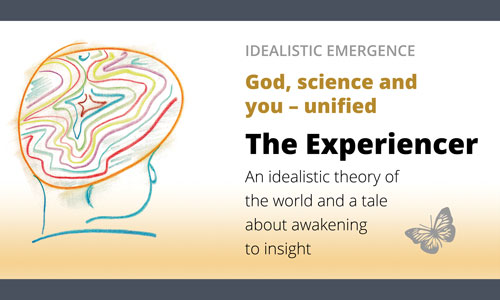In the last chapter, we continue with things you have never heard before.
We now understand what a human being is and the relationship between a single «existence» and the one universal existence that is everything.
With this knowledge, we can explain how we can all move around as individual instances in a collective experience of a world. We can also explain how individual instances – i.e. people, animals, all living things, and everything else, too – stand in relation to the universal spirit.
Once this is understood, we have simultaneously solved another «eternal» problem: free will versus determinism. Both are present at the same time – to anticipate a little.
After reading this chapter, you will also understand how all interactions occur. It is, of course, governed by the exact mechanisms and laws involved otherwise at all levels; emergence and complexity dynamics.
Then, at the end of the book, I let my ambitious project disintegrate, spill into the sand, return to its source – which is love. Love is union – a return to the one everything is, but which we have experienced as something fragmented and separated, a highly «real» illusion. It is in this that you have sat and read this book.
And before the full stop, you will also see that death is the opposite of birth, not of life – for life, love, simply is.
You live forever, but «you» are infinitely more than you think.
Reality is created by the mind.
We can change our reality by changing our mind.
PlatoWhen I started working on this book, there was mainly one problem that preoccupied me, one seemingly Gordian knot to cut.
I was almost convinced that idealism provides the correct philosophical understanding of what the world is in essence. Put a little simpler, I had an idea in my head, namely that «everything is thought».
That was not a new idea in my mind; it also had its origins from the time in the mid-1980s, like so much else I write about here.
